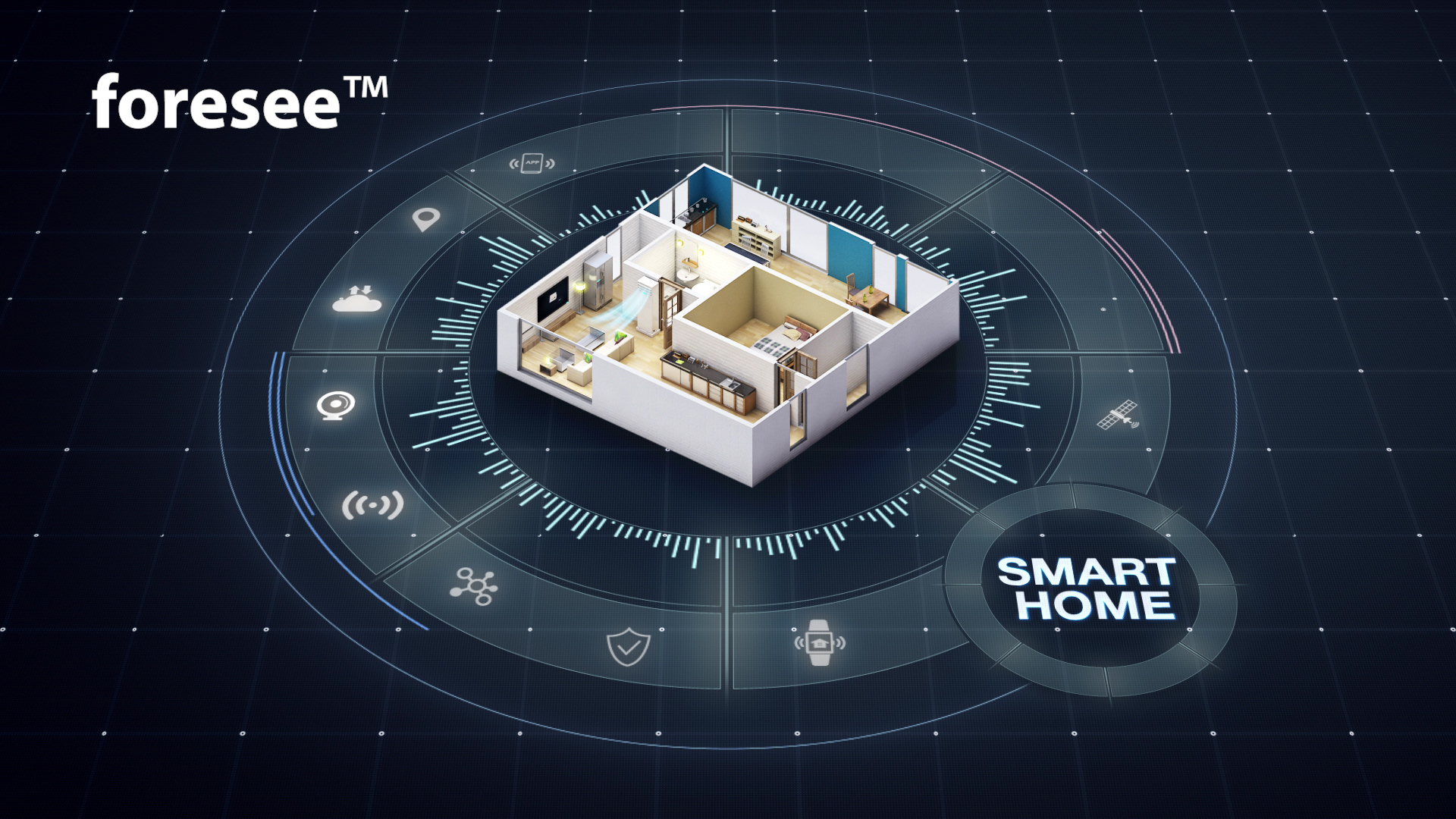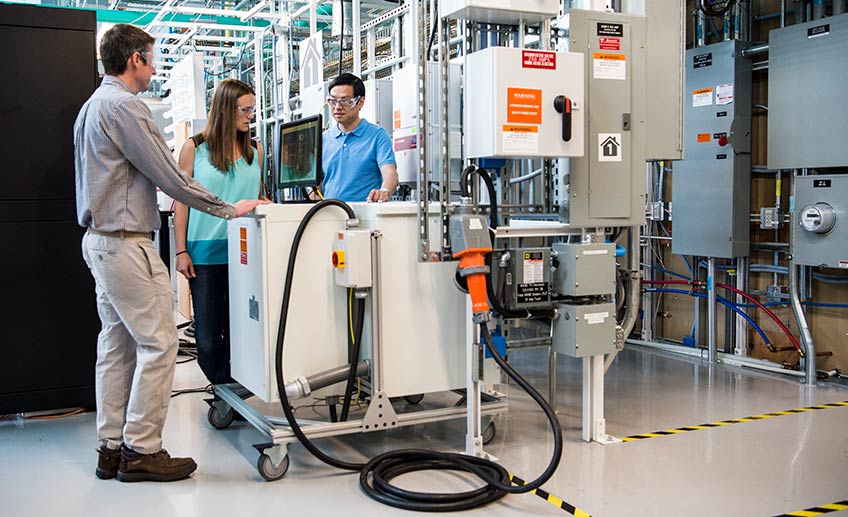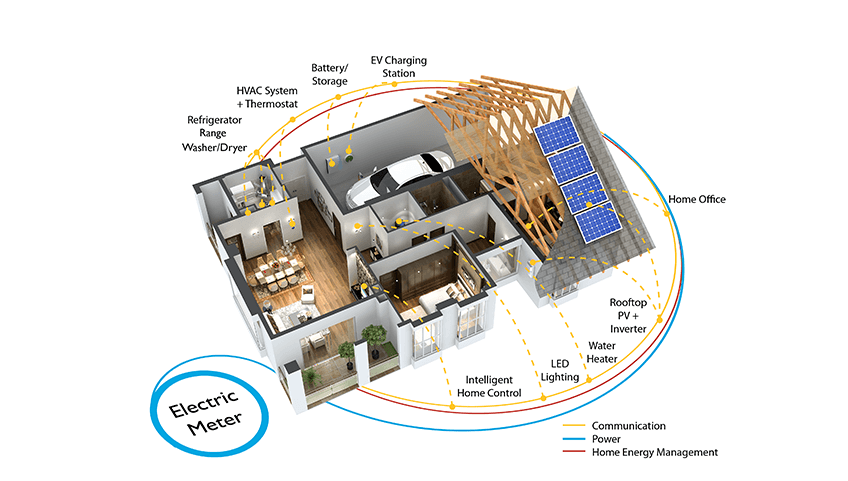Software Saves Energy, Costs, and More
Can You ‘foresee’ a Smart-Home Future? NREL Researchers Do

NREL-developed software—called "foresee"—is an energy management system that relies on user preferences to control a home’s connected appliances and electronics. Image by iStock
Take a minute to program your smart thermostat. Simple enough, right? Now, set up multiple connected appliances so they all coordinate to reach a common goal. Not so easy, is it? In fact, at the moment it's nearly impossible.
"Right now, if you had a smart dishwasher, a smart washer/dryer, and a smart water heater, you'd have to set up the schedule for everything yourself," said Bethany Sparn, a mechanical engineer and researcher at the U.S. Department of Energy's (DOE's) National Renewable Energy Laboratory (NREL). "You'd have to think about how the appliances interact with each other, the occupants, the building, and the power grid. Deciding when you should turn on your lights seems reasonably intuitive, but how should you control your water heater to reduce your utility bill and use solar energy from your solar panels, without risking your hot shower?"
The solution could rest with NREL-developed software called "foresee," an energy management system that relies on user preferences to control and coordinate a home's connected appliances and electronics. The software first asks users to rank what's most important to them about living in their home. Then it takes those preferences into account and automatically adjusts the devices accordingly.
"Having automation that's built in, that has an understanding of what's required to keep people happy, is definitely not something that's on the market now," Sparn said.
Dane Christensen, leader of NREL's Residential Systems Performance team and principal investigator on the foresee project, said people typically identify four goals for their house: comfortable air temperature and hot water, convenience, reduced costs, and a low environmental impact. But the order and importance of these goals are different for every household.
"These four categories are hard to trade off against each other," Christensen said. "At foresee's core is a goal of running the home in a balanced way that best serves that family's unique values and schedule. Your goals are going to be different from my family's, just like a retiree on a fixed income is likely to have different goals than a millennial who just got her first job and is living large."
Untapped Savings Opportunities
Using connected appliances, foresee can achieve whole-home outcomes and energy savings that weren't previously available. Over the years, research has identified ways to reduce energy consumption in homes, particularly newer ones, and manufacturers have rolled out energy-efficient air conditioners and water heaters, for example. But, Christensen said, additional energy savings can often be achieved by coordinating when and how a home's appliances operate—regardless of their rated efficiency. According to the U.S. Energy Information Administration, the residential sector consumes more electricity than any other in the United States, so the potential benefits of energy-saving technologies are large.
An interest in reducing home energy consumption was part of the genesis for foresee, which has been in development for about two years. The proliferation of connected devices, collectively dubbed the "internet of things," also provided some of the impetus for foresee. "We're starting to see connected stuff entering our world, especially in the residential building category," Christensen said. "That's happening very quickly." Some connected devices don't directly target energy usage, such as a voice-activated speaker. Others, such as smart thermostats that can learn your schedule, do. "What we're trying to do is take advantage of the energy opportunities that also accompany the connectedness," Christensen added.
To develop and evaluate foresee, NREL partnered with Bosch—a major manufacturer of home appliances and air conditioners, and an expert on embedded cybersecurity—and Colorado State University to build on its prior work related to preference-driven building automation. Bosch supplied a suite of appliances: an air conditioner, refrigerator, dishwasher, washing machine, and dryer. In addition, the researchers used an electric water heater and a connected thermostat, as well as a photovoltaic inverter and a battery to capture and store electricity generated from the sun.
Funding for the research came from Bonneville Power Administration, which provides electricity in the Pacific Northwest, and DOE's Building Technologies Office.

Researchers Scott Carmichael (left), Bethany Sparn, and Xin Jin conduct experiments with the foresee software, which orchestrates a solar inverter, home battery, and other smart appliances as part of a home energy management system. Photo by Dennis Schroeder/NREL
An Easier Way to Manage Devices
The software also accounts for time-of-use rates, a growing trend in which utilities charge customers varying prices depending on electricity demand at different times of day. Just as the cost of a gallon of gasoline can influence how much you drive, time-of-use pricing in the home can motivate how much electricity you use and when. "Time-varying electricity costs can be confusing for homeowners to manage," Christensen said. "Nobody wants to be sitting around making decisions for their appliances all the time. We'd really rather have it be automated and working for us in the background."
With foresee, users can pick smart products from any manufacturer. "You can start with one or two appliances and then build on that over time," Christensen said. "All of us live in existing homes that don't have smart products."
The researchers conducted a series of tests on foresee using one of the "homes" in NREL's Energy Systems Integration Facility near Denver, Colorado. The experiments used actual weather data and simulated a typical home for the region. The team looked at how a house with a full complement of smart devices would run during a 24-hour span—first without the benefit of foresee's automation or the storage battery (to establish a baseline), and then with the software running based on user preferences.
"Every use case that we ran with foresee saved energy," Sparn said. "Every use case we ran with foresee saved money. There's definitely opportunity for improvement, but overall, the results were really good, really positive."
The team also compared how well foresee was able to adjust for different climates. They simulated a typical home in Portland, Oregon, where the weather tends to be mild; Spokane, Washington, which swings from hot summers and cold winters; and the more tropical Hawaii. The amount of money foresee saved on energy in a single day ranged from 5-40%, but fell largely within the 10-15% range.

A series of laboratory tests were conducted on foresee using one of the “homes” in NREL’s Energy Systems Integration Facility. NREL researchers simulated how a house with a full complement of smart devices would run during a 24-hour span—first without the benefit of foresee’s automation or the storage battery to establish a baseline, and then with the software running based on user preferences.Image by Josh Bauer/NREL
Impact in the Real World
"The results are definitely significant," Sparn said. "If they can be achieved in real homes, that starts to add up to something real, especially in places such as Hawaii where electricity costs are about 3-4 times what we have in Denver."
Christensen said: "Saving even 5% of every home's energy would put about $10 billion back in American homeowners' pockets each year, and that energy reduction is equivalent to the energy used by every household in 12 states combined: Alaska, Delaware, Hawaii, Idaho, Maine, Montana, New Hampshire, North Dakota, Rhode Island, South Dakota, Vermont, and Wyoming."
Christensen added that foresee, which is available for licensing, could find its way into homes in myriad ways. A manufacturer might embed it as an application in its products. A utility could run the software on a smart meter or in the cloud.
"This type of solution is a few years from being commercially available," Christensen said. "Our next goal is to find field test sites where we can go out and do some pilot demonstrations. That will give us a whole lot of data to make the software even more effective—so it can become a product and be available for people to use."
Learn more about foresee, NREL's home energy management system.
Last Updated May 28, 2025
